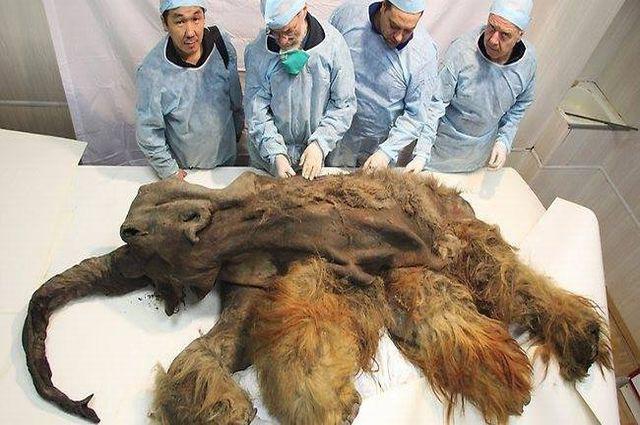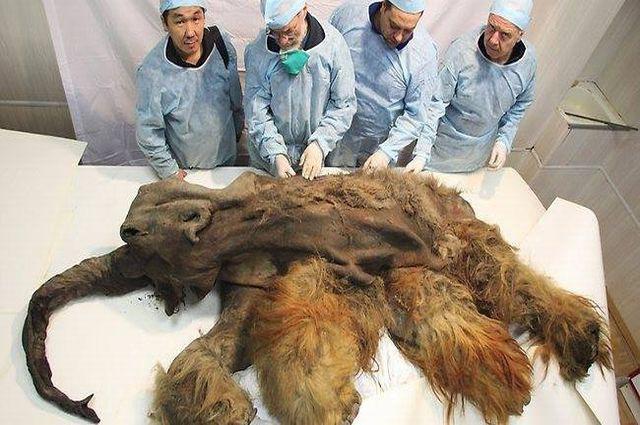
Discovery of Remarkably Preserved Mummified Saber-Toothed Cub in Siberia
A stunning paleontological discovery was made in the icy expanses of Siberia, with the unearthing of a remarkably well-preserved mummified saber-toothed cub, estimated to be around 35,000 years old. This extraordinary find, which could provide invaluable insights into the lives of prehistoric species, was initially uncovered in 2020 in a remote region northeast of Yakutia, Russia.
Scientific Revelation
The findings from the frozen remains were made public in a detailed study published on November 14, 2024, in the journal *Scientific Reports*. According to the researchers, remains from the Late Pleistocene era are extremely rare, although a significant number have been located in the Indigirka River basin of Russia. The existence of such a well-preserved specimen offers an unprecedented opportunity for scientific inquiry.
A Glimpse Into the Past
Encased in ice for millennia, the saber-toothed cub has retained much of its original fur and anatomical features, providing a mesmerizing glimpse into a time long past. The fur is described as “short, thick, soft, dark brown,” with hair lengths ranging from 20 to 30 millimeters. Notably, the fur on the cub’s back and neck is longer than that found on its legs, adding to the uniqueness of the specimen. Features such as the head, chest, forelimbs, and paws were found to be exceptionally well-preserved, making this discovery significant for researchers keen on understanding the biology of extinct species.
Paleontological Breakthrough
This research marks a groundbreaking moment in paleontology, as it is the first instance where scientists have had the opportunity to closely examine the appearance and characteristics of an extinct mammal without a modern counterpart. Identified as a member of the species Homotherium latidens, commonly referred to as the scimitar-toothed cat, the cub exhibits distinct features that set it apart from modern-day felines, including lion cubs of a similar age.
Distinct Physical Characteristics
The saber-toothed cub showcased several key physical traits that highlight its evolutionary differences. These include a pronounced large muzzle, small ears, a “massive” neck, and long forelimbs. Its darker coat coloration and large paws, characterized by the absence of carpal pads, suggest adaptations likely devised to thrive in the icy, snow-laden habitats it once roamed. Such adaptations may provide significant clues regarding how this species managed to survive in severe climatic conditions during its time.
Life Cycle Insights
The cub is believed to have met its demise at approximately three weeks of age. This young age presents scientists with a unique opportunity to delve deeper into understanding not just the physical makeup of Homotherium latidens, but how such species may have adapted their life cycles to the harsh environments of the Late Pleistocene.
Prehistoric Findings in Siberia
Siberia’s permafrost has previously unveiled other intriguing prehistoric finds. In 2021, for example, scientists discovered a mummified wolf estimated to be over 44,000 years old, further underscoring the region’s potential for yielding major paleontological discoveries. Reports, including those from *Live Science*, highlight the crucial role these finds play in piecing together the enigmatic history of life on Earth during prehistoric epochs.
An Unprecedented Opportunity
The recent discovery of the saber-toothed cub presents a rare and invaluable opportunity for researchers aiming to study more about a species from the Late Pleistocene. As scientists continue to excavate and analyze such breathtakingly preserved specimens, they unlock mysteries of existence from tens of thousands of years ago, enhancing our understanding of biodiversity and the ecological dynamics of ancient environments.
Conclusion
In summary, the discovery of a mummified saber-toothed cub in Siberia’s permafrost is a pivotal moment in paleontological research. The exceptional preservation of the cub’s fur and features opens new avenues for the study of extinct species and their adaptations to prehistoric climates. As investigations continue, these findings quintessentially embody the rich tapestry of Earth’s biological history, bridging the ancient with the contemporary. Scientists remain hopeful that further research will yield insights that not only illuminate the past but also inform our understanding of evolution and survival.


















